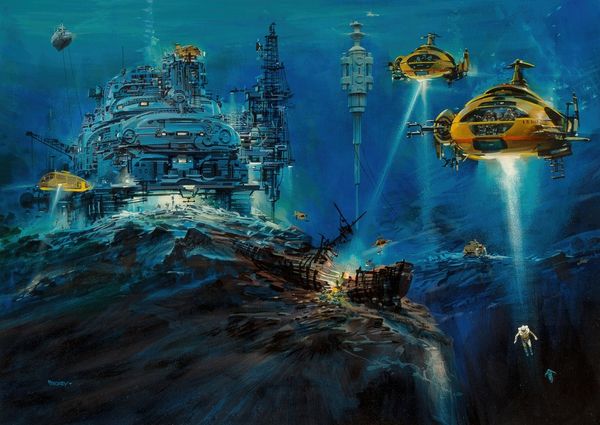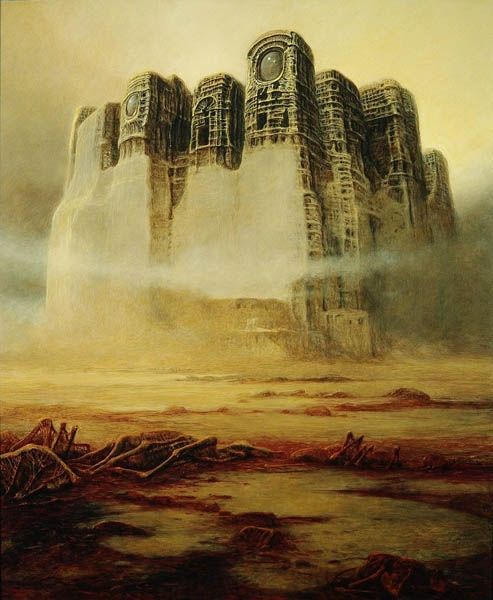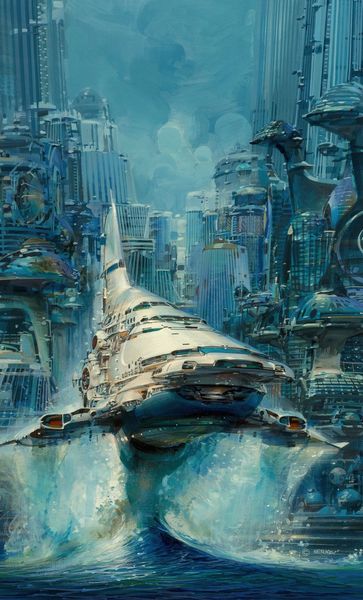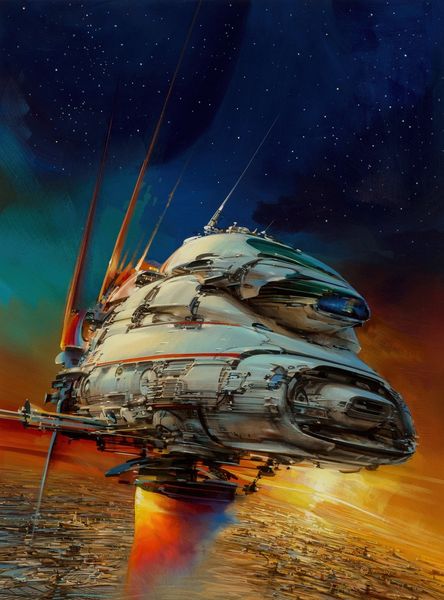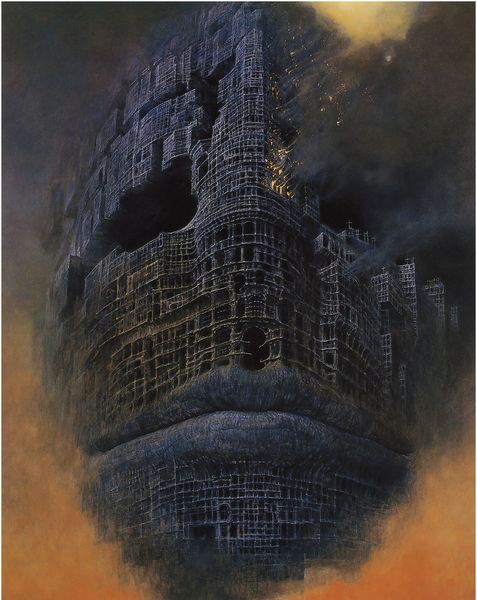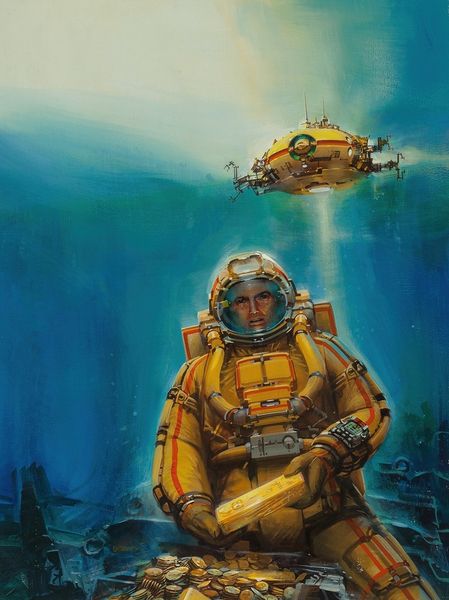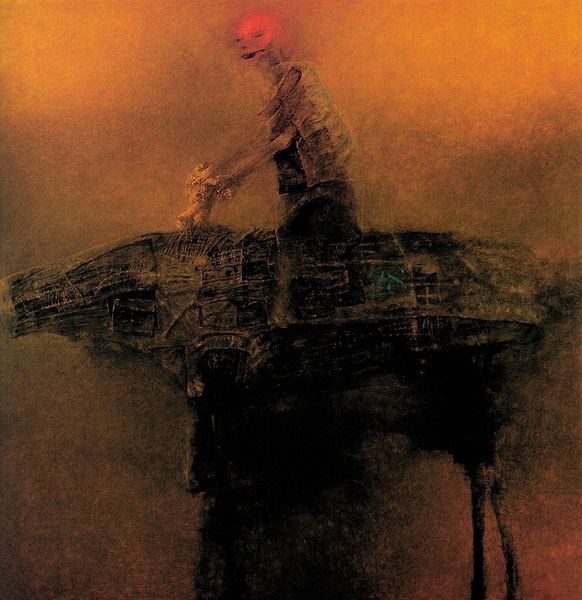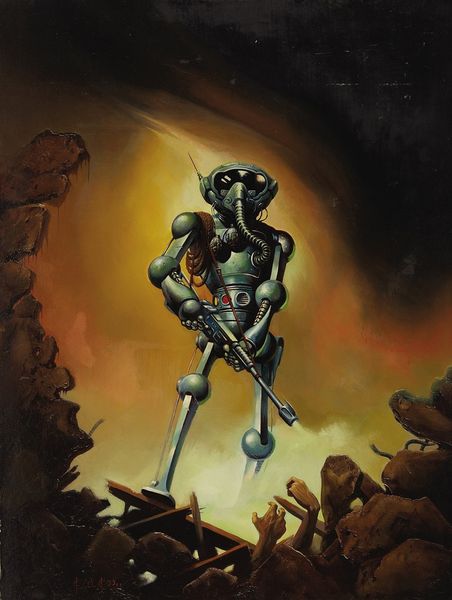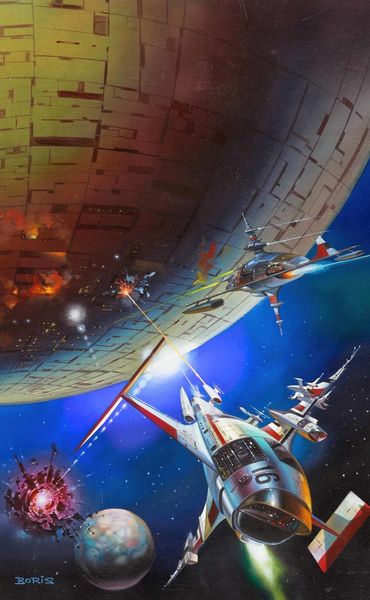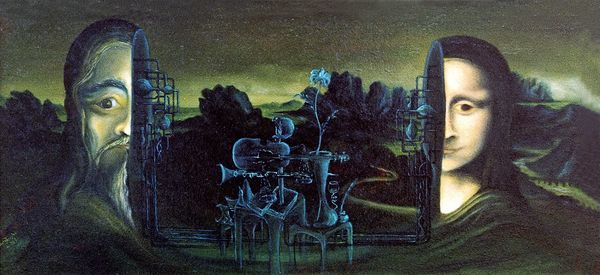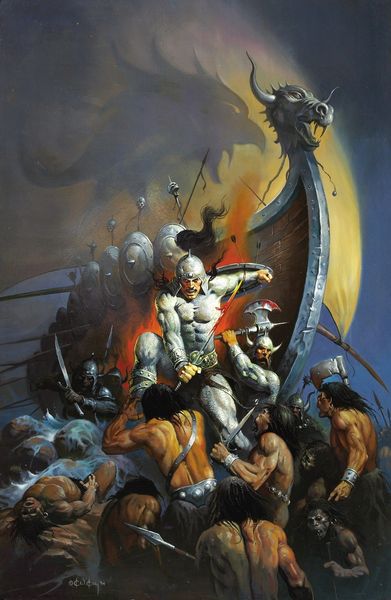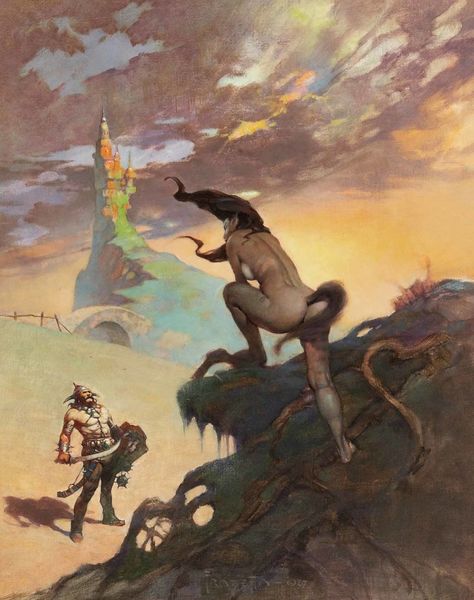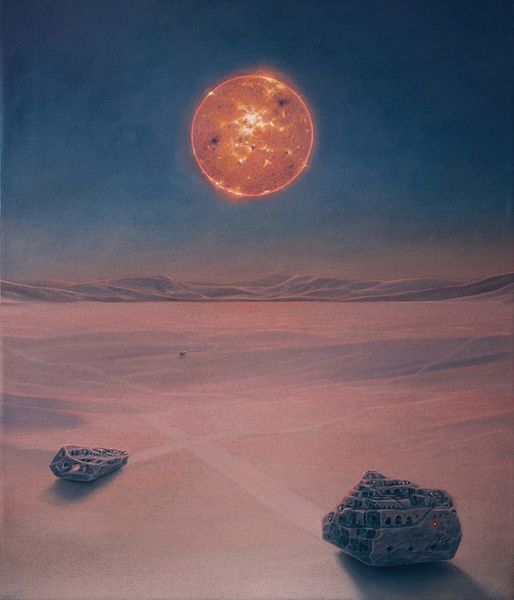
Copyright: Modern Artists: Artvee
Curator: Welcome. Here we see Boris Vallejo’s cover art for "A Hostage for Hinterlands," painted in 1980. It exemplifies his romantic, often hyperreal style of fantasy illustration. Editor: It has a captivating sense of ominous scale. The tiny riders against this huge, encased city give the whole image an unsettling, almost dystopian feel, doesn't it? Curator: Yes, observe how the artist utilizes contrasting scales to generate a unique visual syntax. The positioning of riders on the lower section against the backdrop of the encased city evokes the contrast between freedom and confinement. This highlights Vallejo’s mastery of semiotics in fantasy art. Editor: I think there is something unsettlingly colonial about it. Who is a hostage here, and what’s the context of this potential seizure of resources within a sealed habitat? Curator: The orb itself acts as a pictorial boundary, focusing our gaze inward, highlighting the intricacies of line and form and spatial arrangement within its structure, doesn’t it? Editor: But the setting’s not neutral; it evokes eco-dystopian narratives, like those about climate change refugees forced to migrate for survival, only to be exploited in the new world. I read this tension within the framework of power dynamics. Curator: Power is a compelling frame, indeed. However, it's critical to not overlook Vallejo’s careful interplay of light and shadow. Note how it guides our vision around and through the various elements that make up this image, the architecture as much as the landscape and the characters themselves. Editor: Agreed, and the lighting emphasizes that sense of hierarchy—who benefits from that interior glow, versus who remains shrouded? Considering how often people of color, especially women, are left out of climate and social justice efforts, who benefits and who doesn’t become the key question here. Curator: An enriching perspective to consider when looking at art of this genre. Editor: Indeed. Seeing how these stories interact is why analyzing this art, from either viewpoint, is so vital today.
Comments
No comments
Be the first to comment and join the conversation on the ultimate creative platform.
